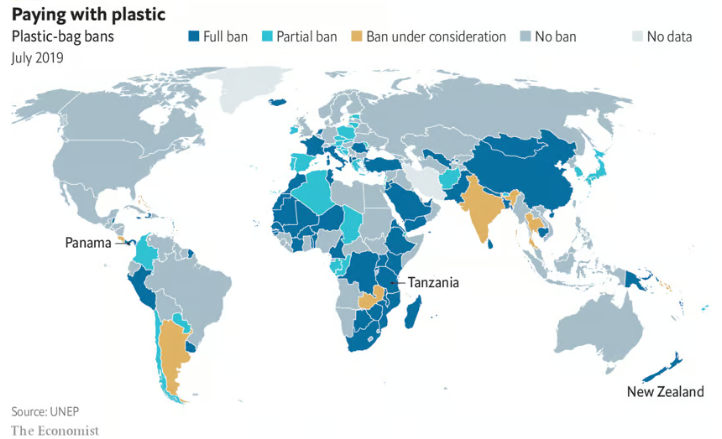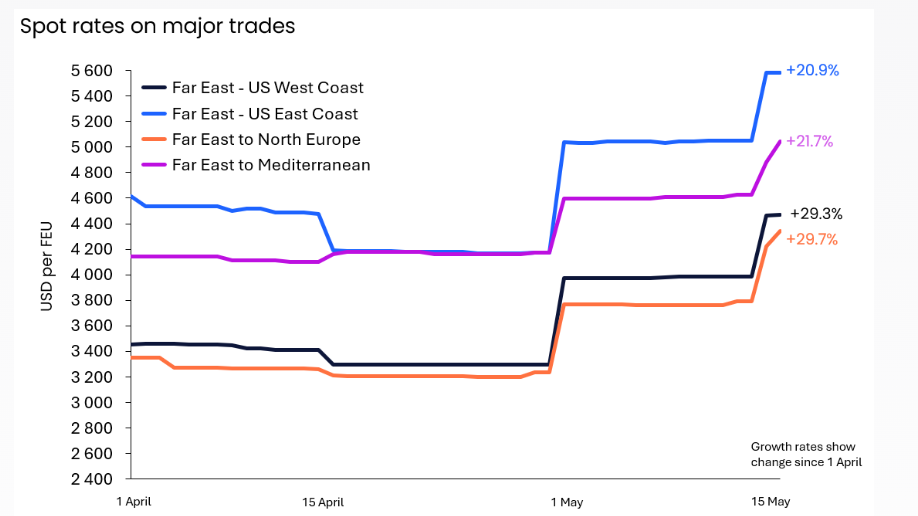Aluminum Price Rise & Plastic Ban- Packaging Challenges
July 15, 2024 Author: Tami
In recent years, the environmentally friendly packaging industry has faced more and more challenges. Including rising aluminum prices, rising transportation costs (mainly rising freight rates in the United States and other countries), and global plastic bans.
Aluminum Price Rise
Aluminum accounts for a large proportion of environmentally friendly packaging materials. In recent years, the price of aluminum has been rising. By June 2024, the price of aluminum had risen to 2497.6 US Dollars Per Metric Ton. The prices in the past few years have remained around 2200us Dollars Per Metric Ton. Starting from April this year, the prices of aluminum have shown a rapid growth trend.
It is generally known that the price of aluminum is constantly rising, which means that in various packaging products such as aluminum raw materials such as aluminum bottles and aluminum cans, the price of sales will continue to increase. In the end, this cost will also be borne by consumers, which means that we have paid higher costs when buying the same product.



Plastic Ban
Plastic bans are laws that prohibit the use of polymers made from petroleum or other fossil fuels because they cause pollution and threaten biodiversity. An increasing number of countries have plastic bag bans and bans on single-use plastics and are looking to extend the ban on all plastic packaging, plastic clothing (such as polyester and acrylic), or any other form of unnecessary plastic.
These plastics can be replaced with readily biodegradable or non-polluting alternatives. Plastics take a long time to biodegrade and may not fully biodegrade (so they are absorbed by the ecosystem), leaving behind traces of microplastics. This ranges from 450 years for PET plastic bottles to thousands of years for polypropylene-based products, including food containers.
From October 2023, the UK government will ban “single-use plastics” in England, a definition that includes a range of products but excludes “pre-packaged food on the shelf” commonly found in most supermarkets.
China will phase in a plastics ban from 2020 to 2025, covering plastic bags, cutlery, certain packaging, and hotel supplies, among others.
As of May 2024, 12 US states have banned single-use plastic bags.
With the global ban on plastics, more and more industries will choose other environmentally friendly materials to replace plastics. However, some plastics are also environmentally friendly, but they are more expensive. For-profit considerations, other substitutes are often chosen. I am happy to tell you that EBI has long stopped producing ordinary plastics. And has chosen to produce plastics with higher environmental protection levels to meet the needs of more customers and contribute to environmental protection.

Transportation Cost
Ocean container spot freight rates on major global routes have risen sharply since the beginning of May, but the reasons behind the sharp fluctuations in rates are unclear.
The largest increase was in the Far East to North Europe trade, which rose 30% from $3,349 on April 1 to $4,343 per FEU on May 16. This is up 198% from 12 months ago ($1,456).
From the Far East to the US West Coast, freight rates have risen 29% since the beginning of April ($3,456) to $4,468 per FEU on May 16. This is up 214% from 12 months ago ($1,422).
From the Far East to the Mediterranean, freight rates have risen 22% since April 1 ($4,144) to $5,044 on May 16, a 100% increase from 12 months ago ($2,521).
From the Far East to the US East Coast, freight rates have risen 21% since April 1 ($4,617) to $5,584 on May 16, a 129% increase from 12 months ago ($2,434).

Latest news
Sea freight finally reaches a turning point——This information comes from July 26, 2024
Affected by the new transportation capacity, Shanghai’s outbound container freight index. After falling for two consecutive weeks, the European and American ocean routes have declined across the board. Especially the US-Western route, which has seen a significant decline.
Significantly affected by the increase in capacity, the most recent Shanghai Outbound Freight Index (SCFIQ) released on 19th July dropped by 3*6%, to 3542/44 percent. The index has been on the trend downward for two weeks. It has also increased. The major ocean routes that connect Europe along with Europe and the United States all suffered declines that exceeded 1 percent. It is notable that of the 10 eastbound trans-Pacific lines that were constructed or restored in recent times. The US-Western route is the most affected, having a decrease in weekly frequency of 6.92 percent, which is an incredibly substantial decrease.
Senior executives of freight forwarding firms and shipping companies have also disclosed that. Due to the rise in overseas sailings, and the continual announcement of new routes. The freight cost of the West Coast route has dropped from the top of US$8,500 on the 1st of July to the current rate of 6,700-6,900 US dollars. USD range. In the same way the freight rate for that US East Route has fallen from the peak of US$10,400 to around US$9 800. It is expected that the market freight rates will decrease in the coming week. However, the decline is expected to be smaller.
——The information comes from a study by Focus Vision
Conclusion
Aluminum and environmentally friendly packaging companies face challenges under the current global plastic ban, rising US freight rates, and rising aluminum prices. However, this is also an opportunity for companies to innovate and grow.
The first is to conduct content marketing and convey valuable information to the audience through articles and case studies – the advantages of aluminum and environmentally friendly packaging. Lead by example, establish a corporate image, and let users join in the developing environmental protection like us.
The second is to focus on research and development and innovation. Propose more environmentally friendly and sustainable aluminum packaging solutions to meet market demand. For example, use recycled aluminum materials, improve packaging design, and other measures.
In the case of rising US freight rates, companies should also actively look for new partners. Find more cost-effective transportation solutions while expanding other international markets.
Faced with challenges such as plastic bans, rising freight rates, and rising aluminum prices. Aluminum and environmentally friendly packaging companies need to respond flexibly and seek opportunities for innovation and development.
Another solution is: if the company’s customers are not in a hurry to get their goods, you can communicate with the customers first. Put this batch of products on hold temporarily, and restart the project after the freight rate drops. This will achieve a win-win situation for both parties.
Let's Talk Packaging!
- Phone: +86-0791-86372550
- Email: marketing@ebi-china.com
- WhatSapp: +86-18779223927
- Monday-Friday: 9 am to 6 pm
Saturday, Sunday: Closed - Address: 28th Floor, Section A, Yunzhongcheng, No.3399 Ziyang Avenue, Nanchang, Jiangxi China
